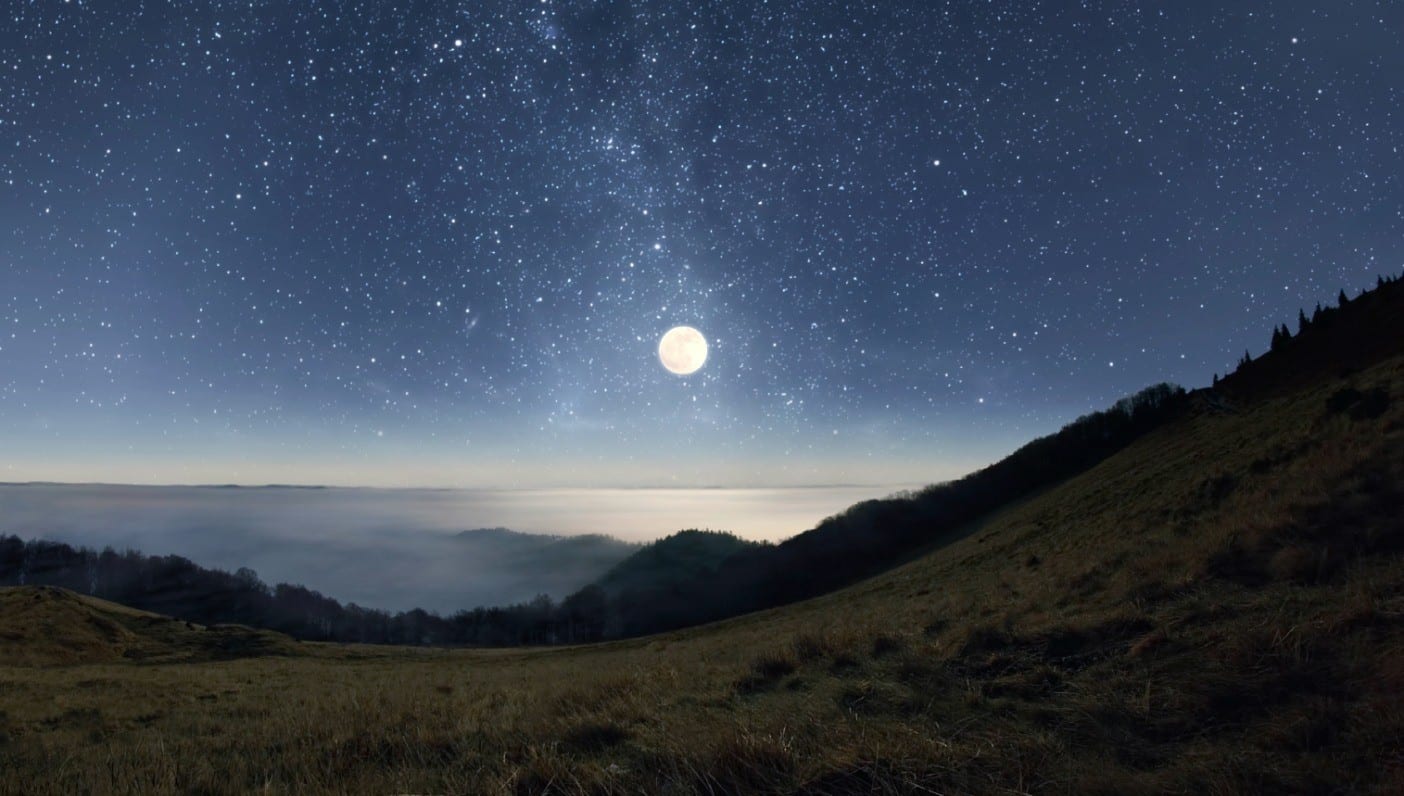
Gaze up at the stars and take in nature in all her glory at a Wanderlust Festival this year. For more information, click here.
Last night I witnessed a rare and beautiful sight: I looked up at rising, waxing moon and lo and behold, noticed a large, round glowing object stationed directly at its left—none other than Jupiter. Any city dweller can attest to the scarcity of such awe-inspiring dark sky sightings. A big illuminating moon is often grand enough on its own, let alone a brightly-lit planet orbiting close-by in divine alignment, suspended low in the heavens. On the morning of March 23, deprived stargazers of the East Coast will rejoice when the cosmos put on spectacular show, unveiling a full moon lunar eclipse and a radiant Jupiter—both visible to the naked eye.
Jupiter’s close proximity to the moon is striking—about the distance of your thumb when held out at arm’s length. With a telescope, Jupiter’s four moons are easily visible, and this week there’s a strong change of witnessing them without one. To get an idea of Jupiter’s massive size, the planet could swallow about 1,200 Earth-sized worlds according to National Geographic.
This month heralded two eclipses: the first was a total solar eclipse on March 8 which cast a shadow on the Earth, and was only visible in parts Indonesia and remote tropics of the Pacific. Though the impending lunar eclipse is only partial, the alignment with a very bright Jupiter and visibility of both is what makes this cosmic event significant for astronomy and astrology aficionados alike. The eclipse will culminate at 7:48am Eastern Time when 78 percent of the moon’s surface is expected to darken.
Once the moon enters the Earth’s outer shadow in what is known as a penumbral eclipse, a slightly darkened moon will loom over central and western United States most prominently, with Jupiter’s vibrant presence lighting up the East Coast as a consolation prize. An umbral eclipse is far more spectacular however, as the Earth’s shadow smears a reddish hue across the lunar surface to produce that “Blood Moon” effect, (remember the full blood moon/supermoon eclipse of September 2015?).
Eclipses are also closely tracked by scientists and grouped into families, this one being Saros 142, which has been around since 1709 and will come to an end in 3007.
The Washington Post has more:
In cosmic terms, this specific eclipse family is quite young, so it is still in ascending node, which means that it will be a few hundred years before this family creates total lunar eclipses. There won’t be a total lunar eclipse in this family for another 200 years, as this is only the 18th out of 73, according to Espenak and NASA. For those keeping score, the last total lunar eclipse in this series will be April 21, 2665 — that’s 800 years after the American Civil War. The next total lunar eclipse of any family will occur on Jan. 31, 2018, in Saros 124.
For astrologers, eclipses are incredibly symbolic. The shadow the Earth casts on the moon (in opposition between the sun and moon) is seen as a metaphor for the “shadows” within us—or what’s going on in the shadows that have remained unseen. So while a solar eclipse casts a shadow on the Earth, a lunar eclipse allows us to literally see these “shadows” within and bring anything hidden to the surface.
Eclipses of any kind can bring sudden, unexpected changes, while lunar eclipses can signify endings. This eclipse in particular falls in the sign of Libra—the scales—which is a sign of duality: light and shadow, black and white, good and evil. And with Jupiter hanging nearby as a symbol for luck and expansion, it would seem that now is an ideal time as any to let go of what no longer serves us by revealing our shadow self; to take a risk and create space to embrace the unknown.
Regardless of your beliefs, this is undoubtedly a good week for practicing a little self-inquiry while contemplating the void—just don’t forget to look up.
—
 Andrea Rice is the Practice and Community Editor for Wanderlust Media. She is also a freelance writer, editor and yoga teacher. Her work has also appeared in The New York Times, Yoga Journal, SONIMA, mindbodygreen, and other online publications. You can find her regular classes at shambhala yoga & dance center in Brooklyn, and connect with her on Instagram and Twitter.
Andrea Rice is the Practice and Community Editor for Wanderlust Media. She is also a freelance writer, editor and yoga teacher. Her work has also appeared in The New York Times, Yoga Journal, SONIMA, mindbodygreen, and other online publications. You can find her regular classes at shambhala yoga & dance center in Brooklyn, and connect with her on Instagram and Twitter.
